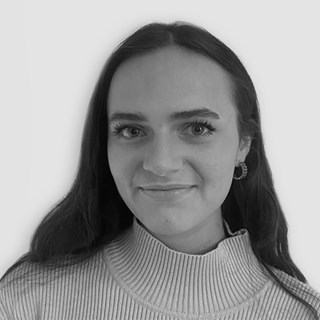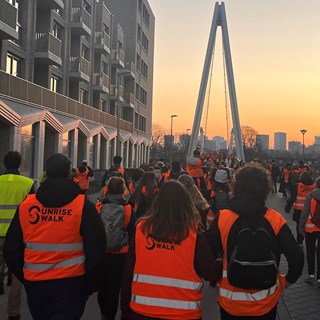
Embracing my neurodiversity
Growing up, I always knew I experienced the world a bit differently to everyone around me – I just didn’t have the words for it back then.
22 May 2025
It’s only later in life that I’ve come to understand and embrace my neurodiversity, and honestly, I wouldn’t change it for anything.
As a young child, I was nonverbal outside the home. I could talk easily with my older sister, who often became my voice when I couldn't find the words myself. She worried later on that maybe she'd somehow held me back – but the truth is, she did the opposite. Having someone who understood me and could speak for me made an enormous difference to how I was able to find my place in the world. It gave me the space and safety to grow.
At school, I spent a lot of time just observing – trying to figure out how people worked, what made conversations flow, how to navigate the world. I didn’t have a diagnosis back then (and still haven’t gone through formal diagnosis for everything), but over time, I learned to understand and embrace the way my brain works.
I found real comfort in numbers and patterns – even as a child, I was happier spending time with my Dataman calculator than chatting with other kids. That passion for numbers and problem-solving naturally led me into studying Environmental Engineering and Applied Mathematics at university, followed by a PhD looking at the hydrodynamic drivers of ecosystem response. I've always been drawn to trying to protect the environment, and thankfully, I found a career that lets me do exactly that.
Now, I’m the Environmental Data Lead in Australia. I work on all sorts of fascinating projects that combine environmental modelling, data, and communication. One of my favourite projects at the moment is the environmental impact assessment for Westport – a major new port development just south of Perth. It’s a once-in-a-generation kind of project that’s about more than just building infrastructure – it’s about creating a sustainable, green port that coexists with a very precious, very complex marine environment. I love that my work is helping shape something that will have a real impact for future generations.
The team I work with are just brilliant. We’re a genuinely diverse bunch, but that diversity isn’t just something nice to have – it genuinely makes our work stronger. Different perspectives, different life experiences, different ways of thinking – they all come together to create better solutions.
Being neurodivergent does bring its challenges. I’ve sometimes been misunderstood or excluded from projects, and there are still difficult days. But there have been far more moments of support, encouragement, and understanding, and they’re what make the real difference.
If there’s one thing I’d ask of my neurotypical colleagues, it’s this: be curious, not judgemental. Don’t focus on what someone can’t do – look at what they can do. Trust me, the strengths that neurodiverse people bring can be extraordinary, whether it’s hyper-focus, creative problem-solving, or a completely fresh way of seeing things.
It’s also OK not to have all the answers. You don’t need to be an expert – just open a conversation. Ask, “How can I support you?” That little bit of understanding can change everything.
I’ve also come to realise, and I hear echoed by many in the neurodiverse community, is how often decisions are made about us, without us. It’s usually well-intentioned, especially in efforts to create more inclusive workplaces, but it can still feel disempowering. Inclusion should never be a tick-box exercise; it needs to be a conversation. The people most impacted should always be part of the planning and the decisions. So if you’re trying to make your workplace more inclusive, start by asking the people you're designing it for – their insight is invaluable.
If you’re reading this and thinking, “Maybe I experience the world a bit differently too,” you’re not alone. Whether you’ve got a diagnosis or you’re just starting to explore what neurodiversity might mean for you, it’s completely valid. Everyone’s journey looks different. At BMT, we’ve recently set up our Neurodiversity Network to help connect, support, and celebrate people across the business. If you’re curious, come and find out more – you’ll be very welcome.
I know that my neurodiversity has shaped every part of who I am – from the little girl counting in threes and playing with a calculator, to the environmental modeller trying to protect seagrass meadows and help design sustainable ports. It’s part of my story, and as I say, wouldn’t change it.
Thanks for reading my story. If you ever want to chat about neurodiversity, environmental modelling, or even just where to find the best coffee – my door’s always open.

Louise Bruce, Environmental Data Lead

"Inclusion should never be a tick-box exercise; it needs to be a conversation. The people most impacted should always be part of the planning and the decisions.
So if you’re trying to make your workplace more inclusive, start by asking the people you're designing it for – their insight is invaluable."

Chloe Yarrien
This International Women in Engineering Day, we’re celebrating Chloe Yarrien, our Maritime Autonomous Systems Engineering Lead - someone who’s making a lasting impact on the future of naval technology through expertise, collaboration and vision.

Pippa Ibson
For six weeks, I had the incredible opportunity of taking part in an Early Careers Development Placement in Cadiz, Spain, working on the Fleet Solid Support (FSS) Programme. The FSS programme is a key project for the Royal Navy, aiming to deliver new support ships to enhance the UK’s naval capabilities.

Martina Marshall-Beatty
If you’re someone who cares about where, how, and with whom you work – welcome to BMT. You’re exactly who we were hoping to reach.

N/A
At 3am on a March morning, while many were still sleeping, our amazing colleagues in the Netherlands laced up their trainers and took on a 15km sunrise walk to raise money and awareness for ALS. This year’s walk carried even deeper meaning, as it was inspired by one of our own teammates recently diagnosed with the condition.